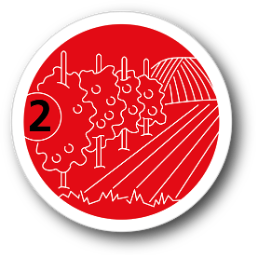The scientific objectives and research questions relate to the provision of knowledge for crop cultivation. Here, resilient cultivation systems and post-harvest processes are promoted which support the cost-efficient, sustainably intensified production of high-quality plant crops, whilst minimising risks for humans and the environment. The following specific questions are dealt with in this context:
- Which newly developed or improved cultivation methods and post-harvest processes enable a stabilisation or increase in yields accompanied by improved resource efficiency in terms of water, nutrients (especially N and P) and energy, without a reduction in product quality or safety?
- Which newly developed or improved cultivation methods allow a reduction in or avoidance of plant-protection product use (including herbicide use) without an accompanying reduction in yields or product quality?
- How do alternative or innovative cultivation systems in arable production and in special crops, such as conservation farming (minimum tillage, permanent ground cover where possible, adapted crop rotation), mixed crops, organic farming and measures for promoting the juvenile development of crops, as well as new post-harvest methods, affect resource efficiency, resilience, profitability, and the risk for humans and the environment?
- How do different cultivation methods in combination with location, variety and post-harvest processes affect the quality and marketability of products, as well as their profitability (e.g. dependence of quality of arable crops on fertilisation, variety and location, or dependence of quality in fruit production on thinning out, variety and location)?
- What new findings on the influence of cultivation systems and location on components of agroecosystems (inter alia the interaction of soil, soil microorganisms and plants, as well as symbioses, nutrient flows, weeds, pathogens and diseases) allow the development of resilient cultivation systems which increase resource efficiency, safeguard or increase yields, and help to ensure high product quality?
- What influence do bioeffectors (i.e. viable microorganisms or active plant compounds) and phytoregulators have on crop growth, the efficiency of nutrient acquisition, and resistance to stress factors?






